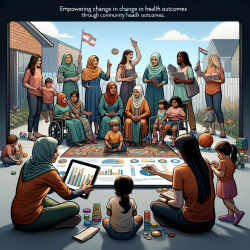Introduction
The advent of teledentistry has revolutionized the healthcare landscape, offering a wealth of insights for various fields, including speech-language pathology. The research article "Teledentistry from research to practice: a tale of nineteen countries" provides a comprehensive overview of the implementation of teledentistry across different nations, highlighting its potential to enhance healthcare delivery. This blog aims to explore how speech-language pathologists can leverage the findings from this study to improve their practice and encourage further research in the field.
Understanding Teledentistry and Its Relevance
Teledentistry, as defined in the study, involves the use of information and communication technology (ICT) for dental consultations, diagnosis, and treatment planning. This concept is closely related to telehealth and telemedicine, which have become increasingly relevant in the context of the COVID-19 pandemic. The study outlines the policies, strategies, and barriers related to teledentistry implementation in 19 countries, offering valuable insights into how similar approaches can be applied in speech-language pathology.
Key Findings and Their Implications
The research highlights several critical findings:
- Only a few countries have established national teledentistry programs, emphasizing the need for supportive laws, funding, and training.
- Teledentistry programs are more prevalent in countries with robust ICT infrastructure and supportive eHealth policies.
- The COVID-19 pandemic has accelerated the adoption of teledentistry, demonstrating its potential to improve access to care, especially in underserved areas.
These findings underscore the importance of integrating telehealth solutions into speech-language pathology practices. By leveraging technology, practitioners can reach more children, particularly those in remote or underserved regions, ensuring they receive timely and effective interventions.
Applying Teledentistry Insights to Speech-Language Pathology
Speech-language pathologists can draw inspiration from the teledentistry model in several ways:
- Adopting Technology: Embrace telepractice to conduct remote assessments and therapy sessions, utilizing video conferencing and digital tools to engage with children and their families.
- Policy Advocacy: Advocate for the development of telepractice policies and guidelines within speech-language pathology, ensuring that practitioners have a clear framework to operate within.
- Training and Education: Invest in training programs that equip practitioners with the skills needed to effectively deliver telepractice services, ensuring high-quality care.
Encouraging Further Research
The study also highlights the need for further research into the integration of telehealth solutions within healthcare systems. Speech-language pathologists can contribute to this growing body of knowledge by conducting research on the efficacy of telepractice, exploring new technologies, and sharing best practices. By doing so, they can help shape the future of telehealth and ensure that it continues to evolve to meet the needs of children and their families.
Conclusion
The insights gained from the "Teledentistry from research to practice: a tale of nineteen countries" study offer valuable lessons for speech-language pathologists. By embracing technology, advocating for supportive policies, and engaging in ongoing research, practitioners can enhance their practice and improve outcomes for children. To read the original research paper, please follow this link: Teledentistry from research to practice: a tale of nineteen countries.










